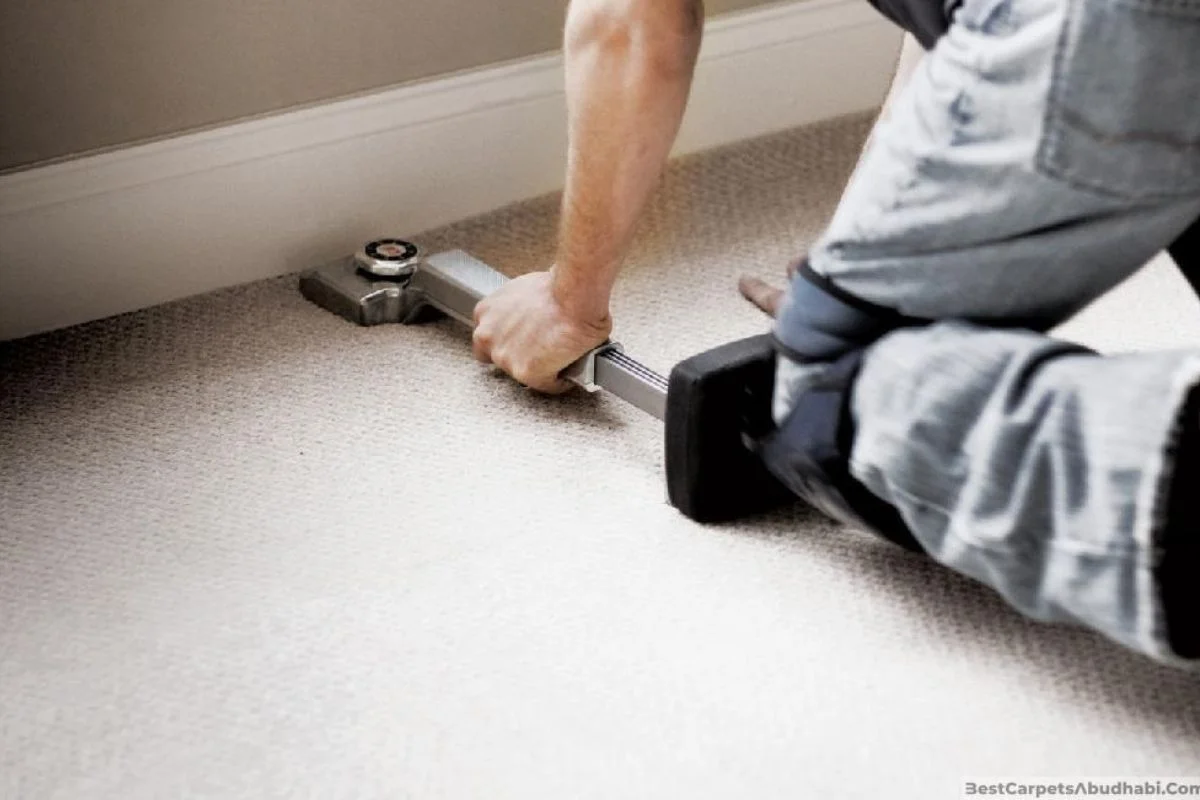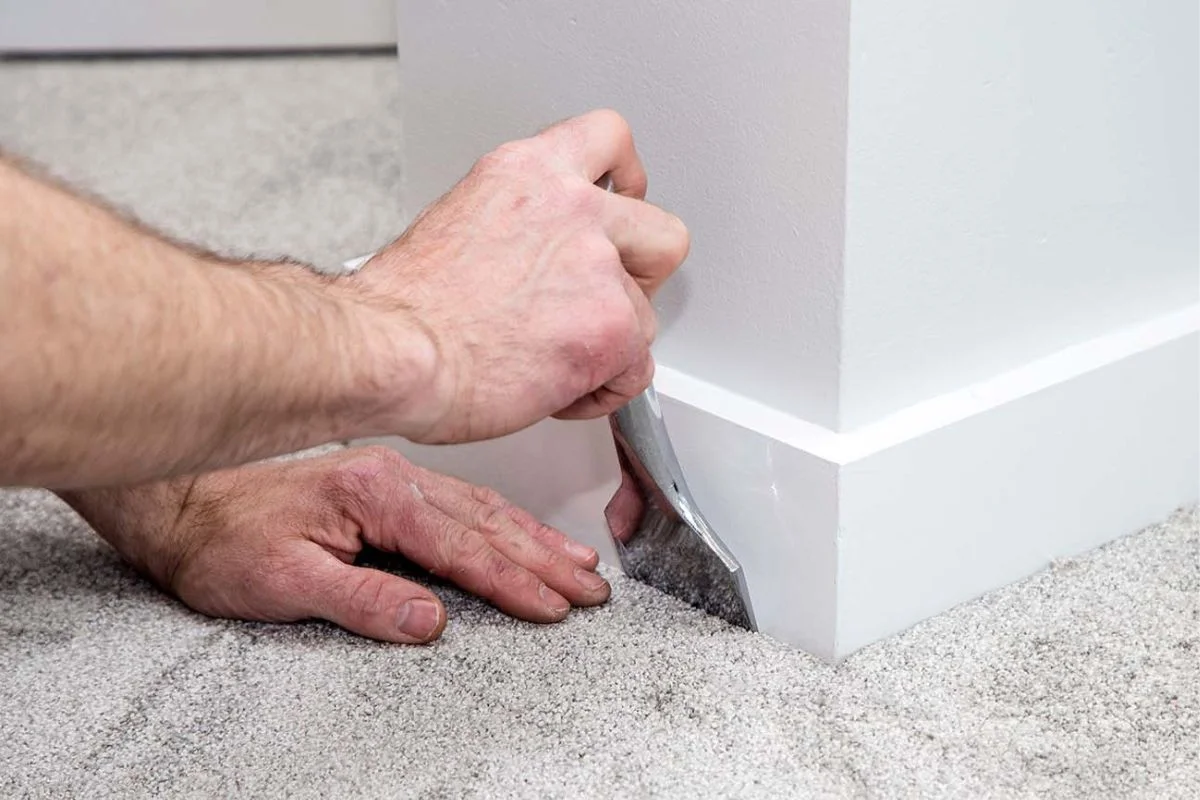
Carpet fitting and installation are critical steps in the process of enhancing the comfort, aesthetics, and functionality of any indoor space. Whether you’re renovating your home, upgrading your office, or remodeling a commercial property, the way your carpet is fitted and installed can significantly impact its overall appearance and performance.
In this comprehensive guide, we delve into the essential aspects of carpet fitting and installation, exploring everything from selecting the right carpet for your needs to ensuring a seamless and professional installation process. Whether you’re a homeowner, a business owner, or a contractor, understanding the intricacies of carpet fitting and installation is essential for achieving optimal results and long-lasting satisfaction.
Throughout this guide, we’ll cover the importance of proper carpet installation techniques, common challenges and mistakes to avoid, the difference between DIY and professional installation, and expert tips and tricks for achieving a flawless finish. By the end, you’ll have the knowledge and confidence to make informed decisions and ensure that your carpet installation project is a resounding success.
Join us as we unravel the mysteries of carpet fitting and installation, empowering you to transform your space with style, comfort, and functionality. Whether you’re embarking on a small-scale project or a large-scale renovation, this guide is your indispensable companion for achieving professional results and creating spaces that inspire and delight.
Importance of Proper Carpet Fitting and Installation:
Proper carpet fitting and installation play a crucial role in ensuring the longevity, functionality, and aesthetic appeal of any indoor space. Here’s why it’s essential to prioritize proper carpet fitting and installation:
Enhanced Appearance: Properly fitted and installed carpet enhances the overall appearance of a room, providing a seamless and cohesive look. A well-installed carpet lays flat without wrinkles or bulges, creating a visually appealing and inviting environment.
Improved Durability: Correct installation techniques help maximize the durability and longevity of the carpet. When installed properly, the carpet remains firmly in place, resisting premature wear and tear that can occur with improper installation methods.
Comfort and Safety: A properly installed carpet contributes to the comfort and safety of occupants by providing a soft and cushioned surface underfoot. It reduces the risk of tripping hazards and provides insulation against noise and temperature fluctuations.
Optimal Performance: Properly installed carpet performs better in terms of wear resistance, stain resistance, and overall functionality. It maintains its structural integrity and appearance over time, even in high-traffic areas, ensuring long-term satisfaction and performance.
Prevention of Issues: Correct installation techniques help prevent common issues such as carpet stretching, seam separation, and premature wear. By addressing potential problems during the installation process, homeowners can avoid costly repairs and maintenance down the line.
Warranty Compliance: Many carpet manufacturers require professional installation to maintain warranty coverage. Hiring certified installers ensures that the installation meets manufacturer specifications and warranty requirements, providing peace of mind for homeowners.
Increased Property Value: Properly installed carpet enhances the value and marketability of a property. Potential buyers are more likely to be attracted to homes with professionally installed carpets that demonstrate quality craftsmanship and attention to detail.
Regulatory Compliance: In commercial settings, proper carpet installation may be necessary to comply with building codes, safety regulations, and industry standards. Adhering to these requirements helps ensure a safe and compliant environment for occupants.

Definition of carpet fitting and installation
Carpet fitting and installation refer to the process of laying down and securing carpeting materials onto a floor surface to create a finished and functional interior space. It involves careful planning, preparation, and execution to ensure that the carpet is properly positioned, secured, and aligned according to the specifications of the area being covered.
Carpet fitting encompasses the precise measurement, cutting, and shaping of carpeting materials to fit the dimensions of the room or space where it will be installed. This process involves assessing the layout of the area, taking accurate measurements, and determining the most efficient and aesthetically pleasing way to install the carpet.
Installation involves securing the carpet to the subfloor using various methods such as stretching, glueing, or tacking, depending on the type of carpet and the subfloor material. It also includes seam joining, where individual sections of carpet are seamlessly connected to create a uniform and cohesive appearance.
The goal of carpet fitting and installation is to create a smooth, flat, and visually appealing surface that enhances the comfort, aesthetics, and functionality of the space. Proper installation techniques help prevent issues such as wrinkles, bulges, and seam separation, ensuring that the carpet remains secure and stable over time.
Overall, carpet fitting and installation require skill, attention to detail, and adherence to industry standards and best practices to achieve professional results. Whether in residential, commercial, or institutional settings, proper carpet installation is essential for creating inviting, comfortable, and safe indoor environments for occupants to enjoy.
carpet fitting and installation Professional vs. DIY Installation: Pros and Cons
Professional Installation:
Pros:
- Expertise: Professional carpet installers have the necessary skills, knowledge, and experience to handle various types of carpets and installation techniques.
- Quality Assurance: Professional installation ensures that the carpet is fitted and secured properly, minimising the risk of issues such as wrinkles, bulges, and seam separation.
- Time Savings: Hiring professionals can save time and effort, as they can complete the installation efficiently and with minimal disruption to your daily routine.
- Warranty Coverage: Many carpet manufacturers require professional installation to maintain warranty coverage, providing added protection and peace of mind.
- Safety Compliance: Professional installers are familiar with safety protocols and building codes, ensuring that the installation meets regulatory requirements and industry standards.
Cons:
- Cost: Professional installation can be more expensive upfront compared to DIY installation, as it involves paying for labour and materials.
- Scheduling Constraints: Coordinating installation appointments with professional installers may require flexibility in scheduling and availability.
- Limited Control: Homeowners have limited control over the installation process and may need to rely on the expertise of the installers.
DIY Installation:
Pros:
- Cost Savings: DIY installation can be more cost-effective, as it eliminates labor costs associated with professional installation.
- Flexibility: DIY installation allows homeowners to work at their own pace and schedule, without relying on external contractors.
- Personal Satisfaction: Completing a DIY installation can be personally rewarding and empowering, providing a sense of accomplishment and pride.
- Customization: DIY installation allows homeowners to customize the installation process and address specific preferences or requirements.
Cons:
- Lack of Expertise: DIY installers may lack the necessary skills and experience to handle complex installation tasks, increasing the risk of errors and issues.
- Time and Effort: DIY installation can be time-consuming and labor-intensive, especially for larger or more challenging projects.
- Quality Control: DIY installers may struggle to achieve professional-quality results, leading to subpar installation and potential issues down the line.
- Voided Warranties: Improper DIY installation may void warranties provided by carpet manufacturers, leaving homeowners vulnerable to repair costs and liabilities.
Types of Carpet Fitting Techniques and Installation:
Stretch-In Installation:
- Stretch-in installation is one of the most common techniques used for fitting carpets.
- In this method, the carpet is stretched over the entire area of the room and secured along the edges using tack strips.
- Installers use a power stretcher to ensure the carpet is stretched tightly and evenly across the floor, minimizing wrinkles and bulges.
- Stretch-in installation is ideal for most carpet types and provides a smooth, uniform appearance.
Glue-Down Installation:
- Glue-down installation involves adhering the carpet directly to the subfloor using adhesive.
- The subfloor must be clean, dry, and free of debris before applying the adhesive.
- Installers spread the adhesive evenly over the subfloor using a trowel and then carefully lay the carpet onto the adhesive.
- Glue-down installation is commonly used for commercial carpets and high-traffic areas where extra stability and durability are required.
Double Glue-Down Installation:
- Double glue-down installation is a variation of the glue-down method that involves applying adhesive to both the subfloor and the back of the carpet.
- This technique provides added stability and prevents the carpet from shifting or buckling over time.
- Double glue-down installation is often used for heavy-duty commercial carpets and areas with extreme temperature fluctuations.
Tackless Strip Installation:
- Tackless strip installation is a method where the carpet is secured to the floor using tackless strips instead of adhesive or stretching.
- Tackless strips are strips of wood with angled nails or pins that grip the carpet backing when it is pressed onto them.
- Installers position the tackless strips around the perimeter of the room and then stretch the carpet over them, allowing the nails or pins to catch and hold the carpet in place.
- Tackless strip installation is quick and efficient and allows for easy removal and replacement of the carpet if necessary.
Floating Installation:
- Floating installation is a method where the carpet is not attached to the subfloor but instead rests on an underlayment or padding.
- Installers lay the underlayment or padding over the subfloor and then lay the carpet on top, allowing it to “float” over the surface.
- Floating installation is commonly used for carpet tiles and modular carpet systems, allowing for easy removal and replacement of individual tiles.

Best Practices for Carpet Maintenance After Installation:
Regular Vacuuming:
- Vacuum the carpet regularly to remove dust, dirt, and debris that can accumulate on the surface and in the fibers.
- Use a vacuum cleaner with adjustable height settings and beater bars to effectively clean different carpet pile heights and textures.
- Vacuum high-traffic areas more frequently to prevent soil buildup and maintain the carpet’s appearance.
Prompt Spill and Stain Removal:
- Address spills and stains promptly to prevent them from setting into the carpet fibers and becoming difficult to remove.
- Blot spills with a clean, white cloth or paper towel to absorb as much liquid as possible without rubbing or scrubbing.
- Use a mild carpet stain remover or a mixture of water and vinegar to treat stubborn stains, following the manufacturer’s instructions.
Professional Cleaning:
- Schedule professional carpet cleaning at least once a year to deep clean and refresh the carpet fibres.
- Professional cleaning methods such as hot water extraction (steam cleaning) or dry cleaning can effectively remove embedded dirt, allergens, and stains.
- Choose certified carpet cleaning technicians who use eco-friendly cleaning solutions and techniques to minimise environmental impact.
Use Entrance Mats:
- Place entrance mats at entryways to trap dirt, moisture, and debris before they can be tracked onto the carpet.
- Clean and maintain entrance mats regularly to prevent them from becoming saturated with dirt and losing their effectiveness.
Rotate Furniture:
- Rotate furniture periodically to redistribute weight and prevent indentations and wear patterns from forming on the carpet.
- Use furniture pads or coasters under heavy furniture legs to minimize pressure on the carpet fibres and prevent crushing.
Preventative Measures:
- Use area rugs and runners in high-traffic areas to protect the carpet from excessive wear and tear.
- Avoid walking on the carpet with outdoor shoes or high heels, as they can cause damage to the fibers and pile.
- Trim pets’ nails regularly to prevent them from snagging or damaging the carpet fibers.
Address Odours:
- Address any unpleasant odours in the carpet promptly by identifying and eliminating the source of the odour.
- Use baking soda or carpet deodorizers to neutralize odors and keep the carpet smelling fresh between cleanings.
Monitor Moisture Levels:
- Keep humidity levels in check to prevent mold and mildew growth in the carpet fibers and backing.
- Use a dehumidifier in humid environments and address any leaks or water damage promptly to prevent moisture buildup.
Conclusion:
Maintaining carpets after installation is essential for preserving their appearance, durability, and longevity. By following best practices for carpet maintenance, homeowners can ensure that their carpets remain clean, fresh, and comfortable for years to come.
